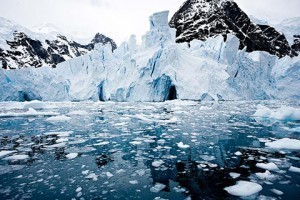Antartica Ice Thickness
The average thickness of ice in  Antarctica is nearly 7,000 ft. Scientists estimate that the ice in Antarctica makes up for about 70% of all the planet’s freshwater.
Antarctica is nearly 7,000 ft. Scientists estimate that the ice in Antarctica makes up for about 70% of all the planet’s freshwater.
General Features
Antarctica is often called the frozen continent for good reasons. 98% of the surface is covered with ice. The Polar Plateau region has ice going down to nearly 15,000 ft. If the icebergs on the continent were to be pulled, they could easily fill up a freshwater lake.
The Antarctic Ice Sheet: Facts
The Antarctic Ice Sheet refers to the blocks of ice at the Southern Ocean. The thickness of ice in Antarctica varies. At its deepest point it can go up to 3 miles or nearly 15,000 feet. This particular ice sheet holds nearly 5 million cubic miles of ice. That is equal to 30 million cubic km.
Not only is it deep; it is also heavy. In some areas the ice is forcing the land below the sea. If the Antarctic Ice sheet was to be removed, the continent would elevate by 1500 feet (450 m). Scientists have observed that the ice sheet is moving in a radial pattern around the sea.
Glaciers in Antarctica
The thickness of ice in Antarctica also depends on the glaciers. These appear when the snowfall exceeds those being melted. The glaciers’ thickness varies, but they are either alpine or continental. The alpine glaciers are located mostly at the mountains and deep into the valleys.
The continental glaciers are situated along the continental land mass. As time passes by, the thickness of the glaciers increase. Scientists have also learned the ice in the region is flowing towards the seas. The rate is one to ten meters annually. As the glaciers go over cracked slopes they help form crevasses along the surface.
Antarctic Icebergs
The icebergs in Antarctica are much larger than those in the Arctic. Just as the thickness of ice in Antarctica varies, so do the icebergs around it. Some of the largest icebergs in Antarctica weigh 400 million tons. Some of the icebergs in the Antarctic reach up to 180 ft in the air. They can also be ten stories high.
Researchers estimate a large iceberg can supply water for a city with 3 million people for 12 months. These icebergs come in a variety of shapes, and scientists use this information to determine their age.
Facts about the Ice Shelves
The ice shelves are comprised of fresh water ice. These are linked to the ice sheets. The Ross Shelf is one of the biggest, taking up 150,000 square miles. It is 500 miles across. The depth of the ice ranges from 100 ft to 3,000 ft.
The Sea Ice
The temperature of the sea usually freezes at 28 F or -1.8 C. This actually spans an area much bigger than the continent. The sea ice or packed ice is broken into large pieces that float around.
Due to global warming and climate change, the thickness of ice in Antarctica is being reduced at rates never before seen.





